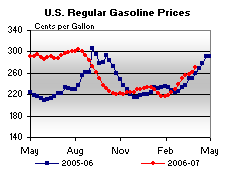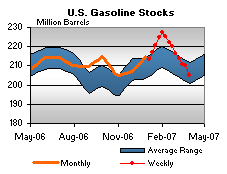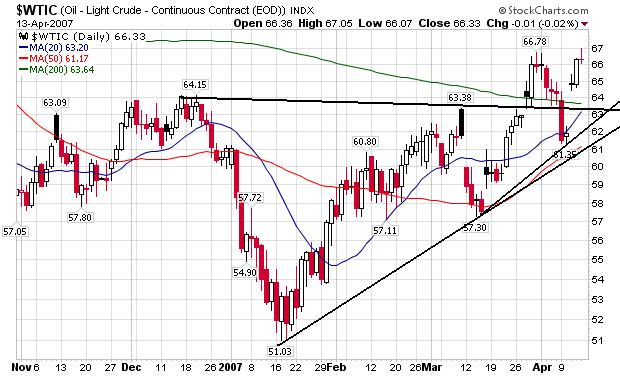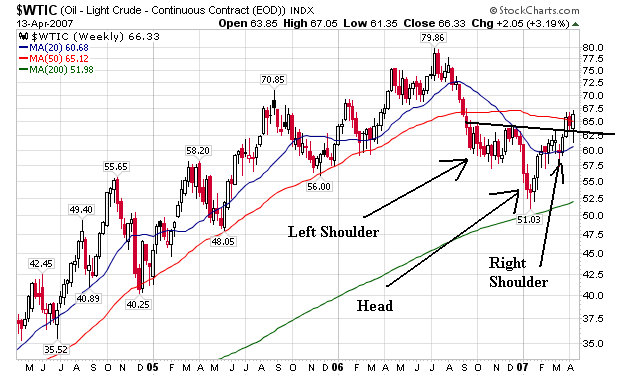Members agreed the statement also should indicate that inflation pressures seemed likely to moderate over time, but that recent readings on core inflation had been somewhat elevated and the high level of resource utilization had the potential to sustain inflation pressures. A persistence of inflation at recent rates could eventually have adverse consequences for economic performance. All members agreed the statement should indicate that the Committee’s predominant policy concern remains the risk that inflation will fail to moderate as expected. The Committee agreed that further policy firming might prove necessary to foster lower inflation, but in light of the increased uncertainty about the outlook for both growth and inflation, the Committee also agreed that the statement should no longer cite only the possibility of further firming.
Yeah, I know -- this is very much a, "we want our cake and eat it too" kind of statement. However, once you get beyond the Fed double-speak, it's actually pretty obvious what they're saying:
The Committee agreed that further policy firming might prove necessary to foster lower inflation, but in light of the increased uncertainty about the outlook for both growth and inflation, the Committee also agreed that the statement should no longer cite only the possibility of further firming.
Let me explain why. Right now there are two really strong upward trends on prices that aren't going away anytime soon.
Gas Prices
According to the Department of Energy:
Gasoline prices saw another significant increase for the week of April 2, 2007, jumping 9.7 cents to 270.7 cents per gallon. This is the ninth consecutive week of increases; prices are now 11.9 cents per gallon higher than at this time last year. All regions reported higher prices. East Coast prices were up 9.6 cents to 267.1 cents per gallon, while Midwest prices rose 9.6 cents to 261.4 cents per gallon. The Gulf Coast saw the largest regional increase, with prices up 12.3 cents to 256.5 cents per gallon. In the Rocky Mountains, prices increased 8.1 cents to 261.9 cents per gallon. West Coast prices were up 8.0 cents to 309.6 cents per gallon, with the average price for regular grade in California up 7.6 cents to 322.8 cents per gallon, 48.5 cents per gallon above last year's price.
Here's a chart from the same report. The red line -- which is higher -- represents this years prices.

One of the primary reasons for the decease is a declining inventory of gasoline. Here is a chart of gasoline stockpiles represented by the orange line.

Aside from dwindling gas stockpiles, oil supplies are also dropping:
The International Energy Agency warned Thursday that output by the Organization of Petroleum Exporting Countries had hit its lowest level in over two years on production outages and self-imposed cuts, a factor likely to drain global oil stocks in the coming months.
In its monthly oil market report, the agency, the energy security watchdog for the Organization for Economic Cooperation and Development, highlighted unexpected product-led reductions in world oil stocks and what it described as "astonishing" demand growth in China, where it was forced to revise up its growth expectations for this year.
Unexpected production outages in Nigeria and maintenance in Saudi Arabia contributed to OPEC's daily output in March falling to a little over 30 million barrels, the lowest since January, 2005.
Let's look at the price of oil. First, here's the daily chart. We had a nice dip when the Britain/Iran situation calmed down, but prices spiked back up to the $64 area the next day. In addition, we have two upward slanting trend lines to deal with. Finally, oil prices are using the 20 and 50 day SMAs for technical support.

On the weekly chart, we appear to have a head and shoulders formation with prices now moving above the neck line.

So, what does all this mean?
We're probably going to have higher gas prices as the summer progresses. And the higher those prices go, the less likely the Fed will cut interest rates. Remember the Fed has been hoping the economy would do the Fed's job of lowering inflation. But, that's not happening right now.